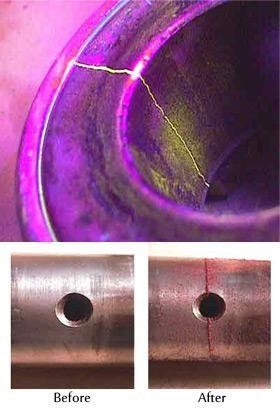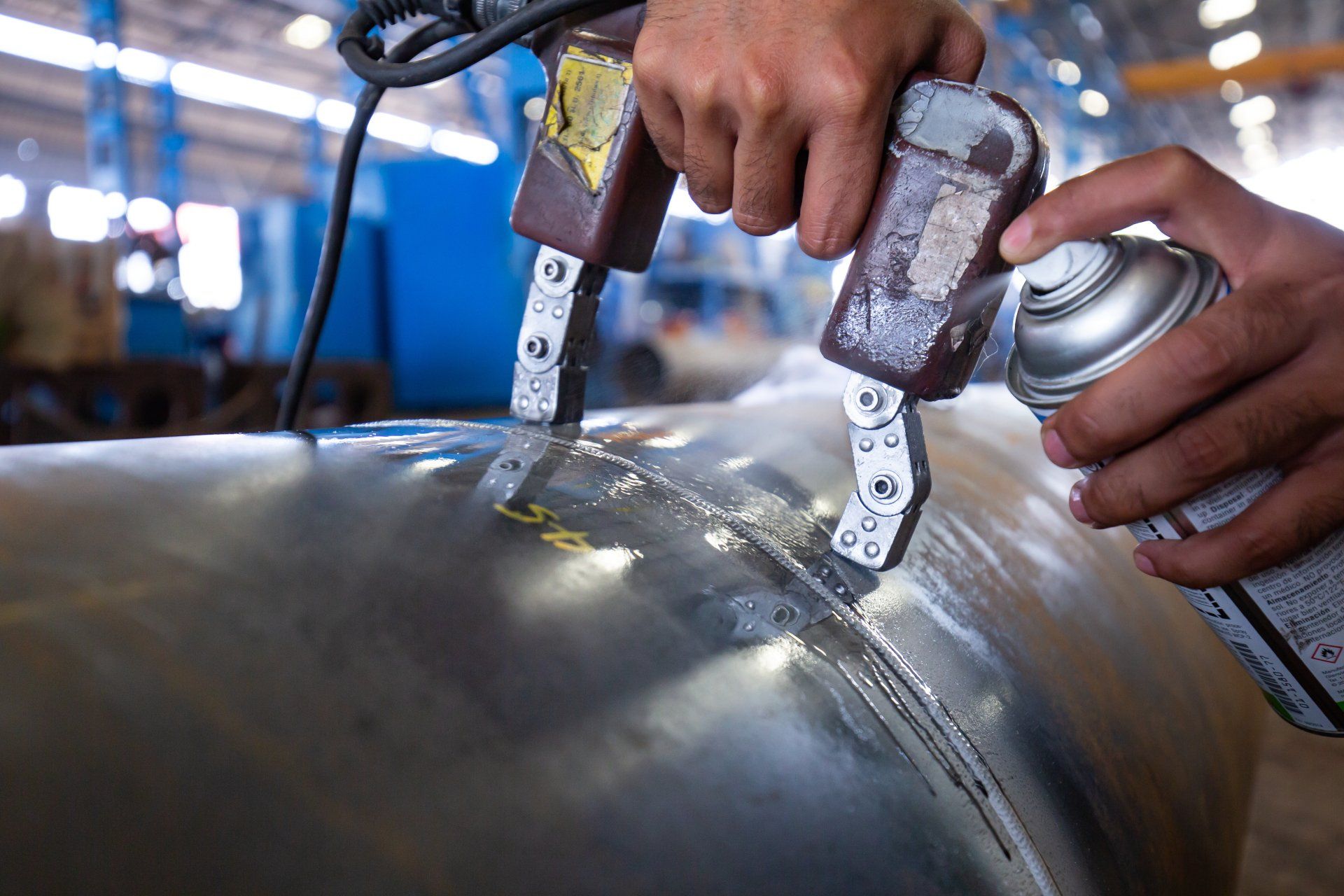Magnetic Particle Testing
Magnetic Particle Testing (MT) is a method used for the detection of surface and subsurface defects and/or discontinuities in ferromagnetic materials. A magnetic field is applied into the part, and iron particles are applied while the part is being magnetized. Defects and/or discontinuities are detected when the particles collect and form an indication within the magnetic field which provides a representation of the size and location of the indication.
Magnetic particle is commonly performed on welds, fittings, piping, castings, forgings, pressure vessels, machined parts, shafts, valves and structural steel.
The inspection surface must be clean and free from material such as oil, grease, thick paint, scale, etc. Inspection may be performed on very thin well-adhered paint providing the inspection sensitivity is not compromised. The testing is performed using either alternating current (AC) or direct current (DC). Alternating current is limited to identifying surface indications, whereas direct current will detect slight subsurface indications which are subject to the type of material and size of defects and/or discontinuities. The direct current method is not as effective as the alternating current method for detection of surface defects and/or discontinuities. A handheld electromagnetic yoke in either alternating or direct current is typically used for field applications.
Magnetic particles are applied as dry powder iron filings, or using wet mediums such as water, solvent or light oil. Dry powders are available in various colors which provide contrast with the color of the material being tested. Wet particles are available in either visible black or fluorescent. For wet black applications, white contrast paint is applied to the component and allowed to dry prior to application of the wet visible particles, whereas fluorescent particles are applied and viewed under ultraviolet black light conditions.
Depending on the type of material and component inspected, demagnetization may be required to prevent equipment malfunction due to residual magnetism.






